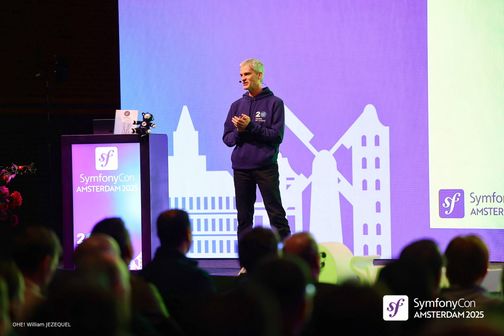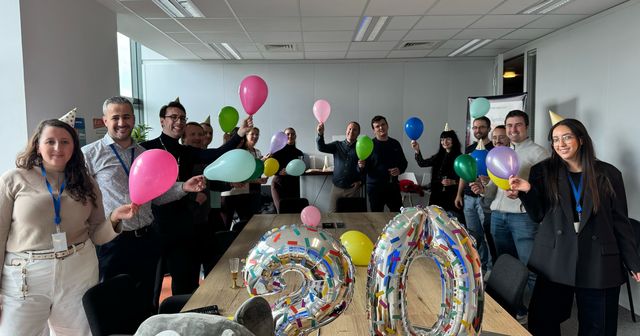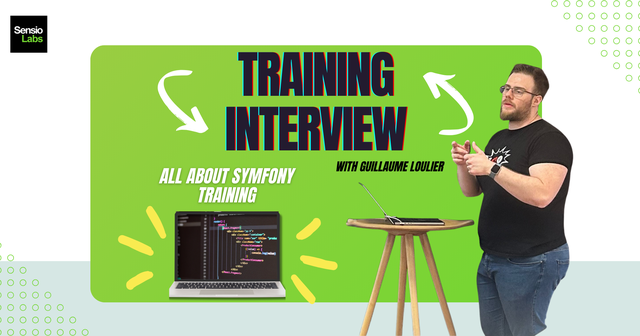Staffbase: Meet Your New Teammates, Symfony & Storyblok
Staffbase, a global leader in employee communications platforms, partnered with SensioLabs Germany to carry out a full relaunch of its corporate website.
The Company: Staffbase
Staffbase provides a platform that enables companies to communicate effectively with their employees, no matter where they are. Its solutions combine mobile apps, intranet, and newsletters in one integrated system, helping communication teams around the world share messages efficiently and strengthen company culture.
With offices across Europe and North America, Staffbase has grown rapidly in recent years. As a recognized leader in employee communications, the company depends on a website that reflects its innovative approach, serves as a central touchpoint for customers and prospects, and supports its international expansion.
The Challenge
Behind the scenes, however, Staffbase’s website was running on a fragile legacy setup. The platform relied on multiple WordPress instances, patched together with third-party plugins and custom workarounds. This created a host of problems.
The system was highly vulnerable, with plugins introducing recurring security and stability issues. Performance was unpredictable, and scalability was nearly impossible as traffic increased. Developers were forced into a reactive mode of maintenance rather than proactive feature development. Adding new functionality was slow, sometimes blocked altogether by the technical debt embedded in the system.
The complexity of managing several different WordPress instances, each with its own quirks, also meant there was no real consistency in infrastructure or content management. For a fast-growing company like Staffbase, this situation had become unsustainable. A modern, future-proof solution was needed.
The Story
The decision was made to leave WordPress behind and embark on a complete rebuild of the website. Staffbase and SensioLabs Germany worked hand in hand to design a new system based on Storyblok, a headless CMS, combined with a Symfony application enhanced by Symfony UX.
Over the course of six months, the project replaced all existing WordPress instances with a unified, component-based setup. Content was migrated automatically wherever possible, and layout-based structures were transformed into reusable components. This shift not only streamlined content management but also laid the foundation for scalable growth and flexible feature development.
One of the challenges was the learning curve for the internal team. Since the technologies and approaches differed significantly from their previous stack, SensioLabs provided dedicated training to bring the Staffbase team up to speed. By the end of the project, the developers were not only comfortable with the new architecture but also equipped with modern practices such as Domain-Driven Design and Symfony best practices.
SensioLabs took the lead on project management and execution, while also ensuring that Staffbase’s own developers were involved and prepared to carry the system forward after launch.
The Implementation
The relaunch was more than a simple migration. It was a complete modernization of Staffbase’s technical foundation. Continuous Integration and Continuous Deployment pipelines were introduced to streamline deployments. Code quality was enforced through tools like PHPStan, Rector, and automated test coverage. Refactoring eliminated legacy dependencies, while pair programming and code reviews helped build a more collaborative and proactive development culture.
At the same time, the project contributed back to the wider community. SensioLabs extended and improved the Storyblok Symfony bundle and API client, ensuring not only Staffbase but also other developers could benefit from the advances made during the project.
The Benefits
The impact of the relaunch was immediate and significant. With the new Symfony and Storyblok-based system in place, Staffbase achieved consistent performance and complete stability. Downtime, once a recurring risk under WordPress, was eliminated entirely.
Chrome User Experience Report with Largest Contentful Paint (LCP) and Cumulative Layout Shift (CLS) indicators (source: CrUX Vis)
Since the relaunch, Staffbase has seen significant increases in key performance indicators over the past few months as shown in the above chart. Loading performance, measured in milliseconds, decreased dramatically from 4,217 to 1,961, indicating a much faster user experience. Visual stability has also improved, dropping from 0.31 to 0.01, ensuring a more stable and less jarring visual layout. These positive trends underscore the success of our efforts in leveraging Symfony and Storyblok to improve the performance of the Staffbase website and increase user satisfaction.
Developers can now work proactively, delivering new features much faster than before. Content teams benefit from improved publishing workflows, intuitive editing interfaces, and structured, reusable components that reduce overhead and errors. The new setup has also dramatically improved SEO performance, strengthening Staffbase’s online visibility and brand presence.
Importantly, the migration cleared away the accumulated technical debt that had been slowing the team down. With Symfony’s long-term support releases and Storyblok’s flexibility, the platform is now equipped to evolve smoothly in the years ahead. Recruiting developers familiar with modern Symfony practices has also become easier, further reinforcing the sustainability of the new approach.
I have never seen such an amazing pace and quality in a project.
Conclusion
For Staffbase, the relaunch was not simply a technical upgrade; it was a transformation. By moving away from a brittle, plugin-ridden legacy system and embracing a modern, component-driven architecture, the company gained a website that matches its ambitions: reliable, scalable, and ready for the future.
With SensioLabs Germany’s expertise, the project achieved in just six months what would have been impossible with WordPress: a stable foundation for growth, faster time-to-market for new features, and a stronger global brand presence supported by modern publishing workflows.







